Cùng nói về mèo Ba Tư nhé
Tên chính thức: Mèo Ba Tư
Các tên khác: Mèo Ba Tư lông dài, Mèo lông dài
Nguồn gốc: Iran (ban đầu là Ba Tư)
Chiều dài lông
5 out of 5Mức độ rụng lông
4 out of 5Nhu cầu chải chuốt
5 out of 5Mức năng lượng*
2 out of 5Xu hướng gây ồn ào
1 out of 5Thú cưng trong gia đình?*
2 out of 5Khả năng hòa đồng với các thú cưng khác
2 out of 5Có thể ở một mình?*
1 out of 5Môi trường (trong nhà/ngoài trời)
2 out of 5
| Male | Female |
|---|---|
| Height | Height |
| 0 - 0 cm | 0 - 0 cm |
| Weight | Weight |
| 5 - 7 kg | 3 - 5 kg |
| Life stages | |
|---|---|
| Mèo con đang lớn | Giai đoạn trưởng thành |
| 4 đến 12 tháng tuổi | 1 đến 7 năm |
| Trưởng thành | Lớn tuổi |
| 7 đến 12 năm | Từ 12 tuổi |
Chiều dài lông
5 out of 5Mức độ rụng lông
4 out of 5Nhu cầu chải chuốt
5 out of 5Mức năng lượng*
2 out of 5Xu hướng gây ồn ào
1 out of 5Thú cưng trong gia đình?*
2 out of 5Khả năng hòa đồng với các thú cưng khác
2 out of 5Có thể ở một mình?*
1 out of 5Môi trường (trong nhà/ngoài trời)
2 out of 5
| Male | Female |
|---|---|
| Height | Height |
| 0 - 0 cm | 0 - 0 cm |
| Weight | Weight |
| 5 - 7 kg | 3 - 5 kg |
| Life stages | |
|---|---|
| Mèo con đang lớn | Giai đoạn trưởng thành |
| 4 đến 12 tháng tuổi | 1 đến 7 năm |
| Trưởng thành | Lớn tuổi |
| 7 đến 12 năm | Từ 12 tuổi |
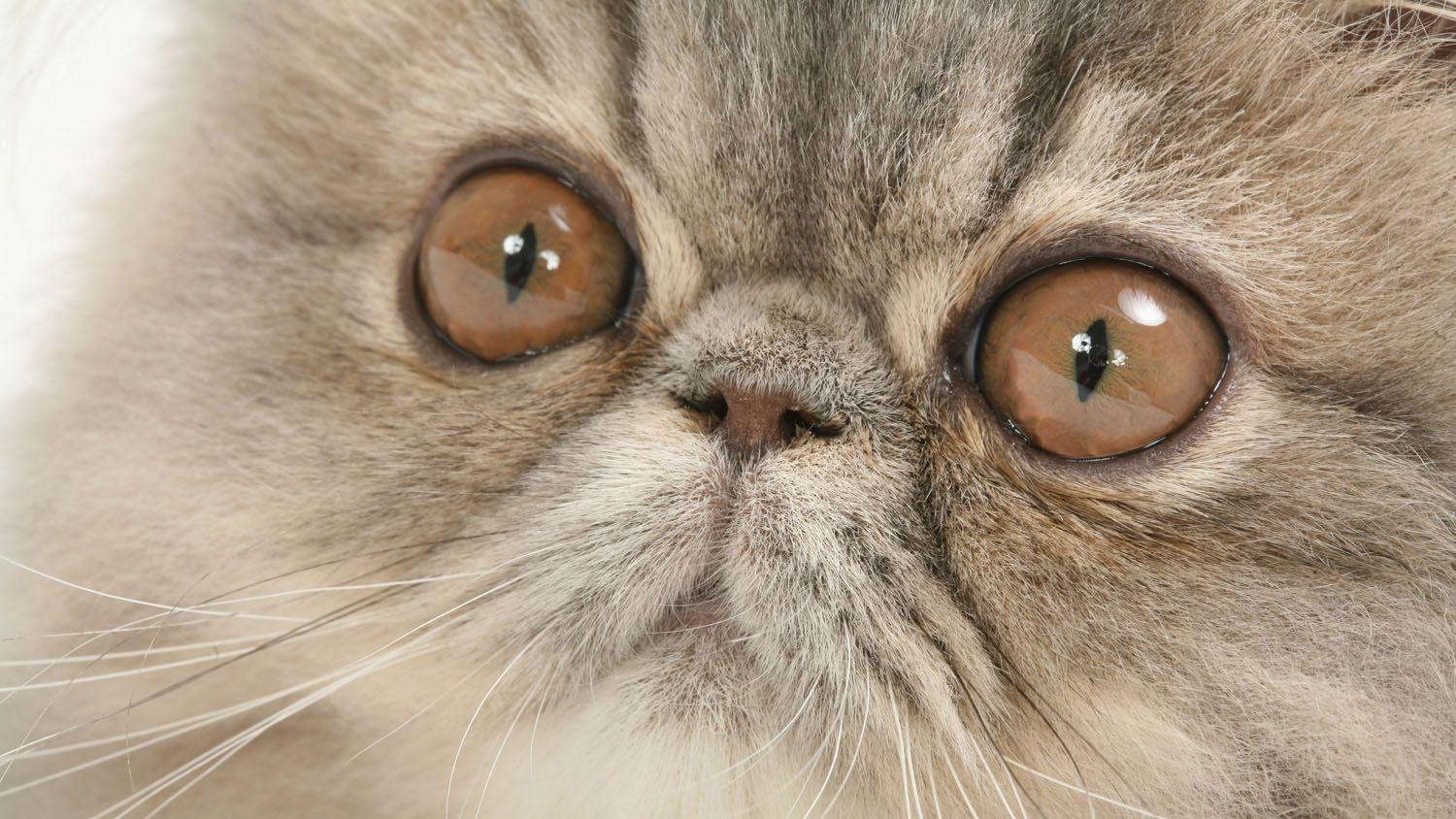
Tìm hiểu về mèo Ba Tư
Tất cả những gì bạn cần biết về giống chó này
Ngọt ngào và nhẹ nhàng, mèo Ba Tư là một giống mèo hết sức thú vị. Bộ lông siêu mềm mại, bàn chân sư tử to và tiếng kêu "meo meo" khiến chúng trở thành những chú mèo hấp dẫn. Giống mèo này rất điềm tĩnh và không thích thay đổi ở bất kỳ hình thức nào, chúng là giống mèo nhà thuần chủng về mọi mặt, hình dạng và hình thể.
Là một giống mèo cổ xưa, lịch sử của mèo Ba Tư đã trải qua bao thử thách của thời gian. Chúng có nguồn gốc từ Ba Tư (thật tuyệt) – giờ là Iran. Từ thập niên 1500 đến nay, chúng đã trở nên phổ biến trên toàn cầu: Hiện tại, có hơn 200 loại mèo Ba Tư trên toàn thế giới.
Giống mèo này rất phổ biến ở Pháp. Vẻ ngoài vương giả của chúng là sự bổ sung hoàn hảo cho văn hóa tinh tế của Pháp.
Dù mèo Ba Tư trông giống cục bông nhưng chúng không thích được săn sóc quá mức và đôi khi không thích sự ôm ấp. Và chúng sẽ thể hiện cho bạn biết điều đó. Có thể bạn rất khó kiềm chế cảm giác muốn vuốt ve chúng, nhưng chúng có tính cách độc lập và sẽ thể hiện tình cảm theo cách riêng. Mèo Ba Tư ngoan ngoãn và khá dễ tính nên bạn có thể để chúng ở nhà khi đi ra ngoài để chăm sóc vương quốc của chúng.
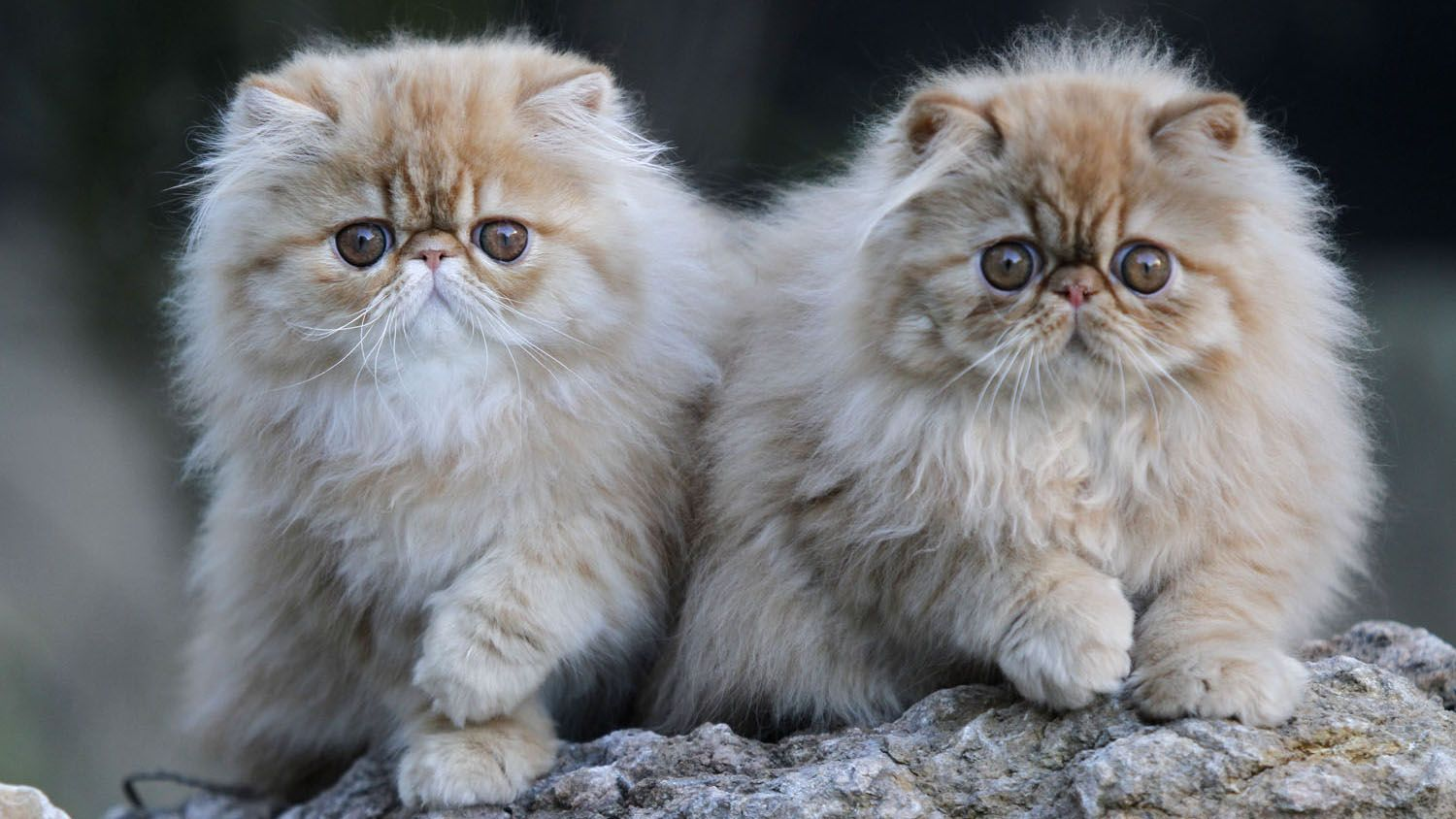
2 sự thật về mèo Ba Tư
1. Mặc dù đến từ Ba Tư...
Nhiệt độ quá cao là một vấn đề đối với mèo Ba Tư. Lý do là vì bộ lông dày của giống mèo này, nhưng tốt nhất nên giữ giống mèo này trong nhà, tránh ánh nắng mặt trời quá mức.
2. Giống mèo phổ biến hàng đầu
Theo Hiệp hội Người yêu Mèo, câu lạc bộ mèo hàng đầu Bắc Mỹ, mèo Ba Tư là giống mèo phổ biến nhất ở Hoa Kỳ và xếp hạng thứ tư trên thế giới. Điều này không có gì đáng ngạc nhiên.
Lịch sử của giống này
Tinh tế, khôn ngoan, bạo dạn - mèo Ba Tư sở hữu tất cả những ưu điểm này và hơn thế nữa. Mèo Ba Tư được phát hiện bởi nhà thám hiểm người Ý Pietro Della Valle vào thế kỷ 17. Ông nhìn thấy giống mèo này lần đầu ở Ba Tư (ngày nay là Iran) và mang theo nó trở về nhà ở châu Âu.
Giống mèo này trở nên phổ biến khắp châu lục khi xuất hiện trở lại vào đầu thập niên 1600. Việc gây giống diễn ra sau đó để bảo tồn bộ lông dài đặc trưng và vẻ đẹp như tạc tượng của chúng. Vua Louis XV khá yêu thích giống mèo này nên đã giới thiệu nó với hoàng gia Pháp trong thập niên 1700.
Buổi triển lãm mèo Crystal Palace được tổ chức tại London vào năm 1871 càng làm tăng sự nổi tiếng của giống mèo này vì Nữ hoàng Victoria – quốc vương vào thời điểm đó – rất yêu thích tính cách của mèo Ba Tư.
Sau nhiều năm gây giống, mèo Ba Tư rất được ưa chuộng đã thay đổi ngoại hình ban đầu thành như ngày nay. Trong nhiều năm, giống mèo này chỉ có bộ lông màu xám bóng mượt, nhưng lần đầu tiên trong hai lần thay đổi gen xảy ra vào năm 1882 đã tạo ra bộ lông Chinchilla có màu trắng rất phổ biến với những đốm màu xám (giống này hiện có nhiều màu lông và kiểu kết hợp). Vào năm 1942, một lần thay đổi gen khác diễn ra và khuôn mặt có đầu ngắn đã xuất hiện, tạo ra ngoại hình dẹt của giống mèo được yêu thích mà chúng ta biết đến ngày nay. Chiếc mũi hếch rất được người lai giống và người yêu mến mèo ưa chuộng, nhưng sự phát triển của nó dẫn đến các vấn đề về hô hấp, ảnh hưởng không tốt đến sức khỏe của mèo Ba Tư.
Từ đầu đến đuôi
Đặc điểm thể chất của mèo Ba Tư
1.Tai
2.Cái đầu
3.Thân hình
4.Đuôi
5.Bộ lông
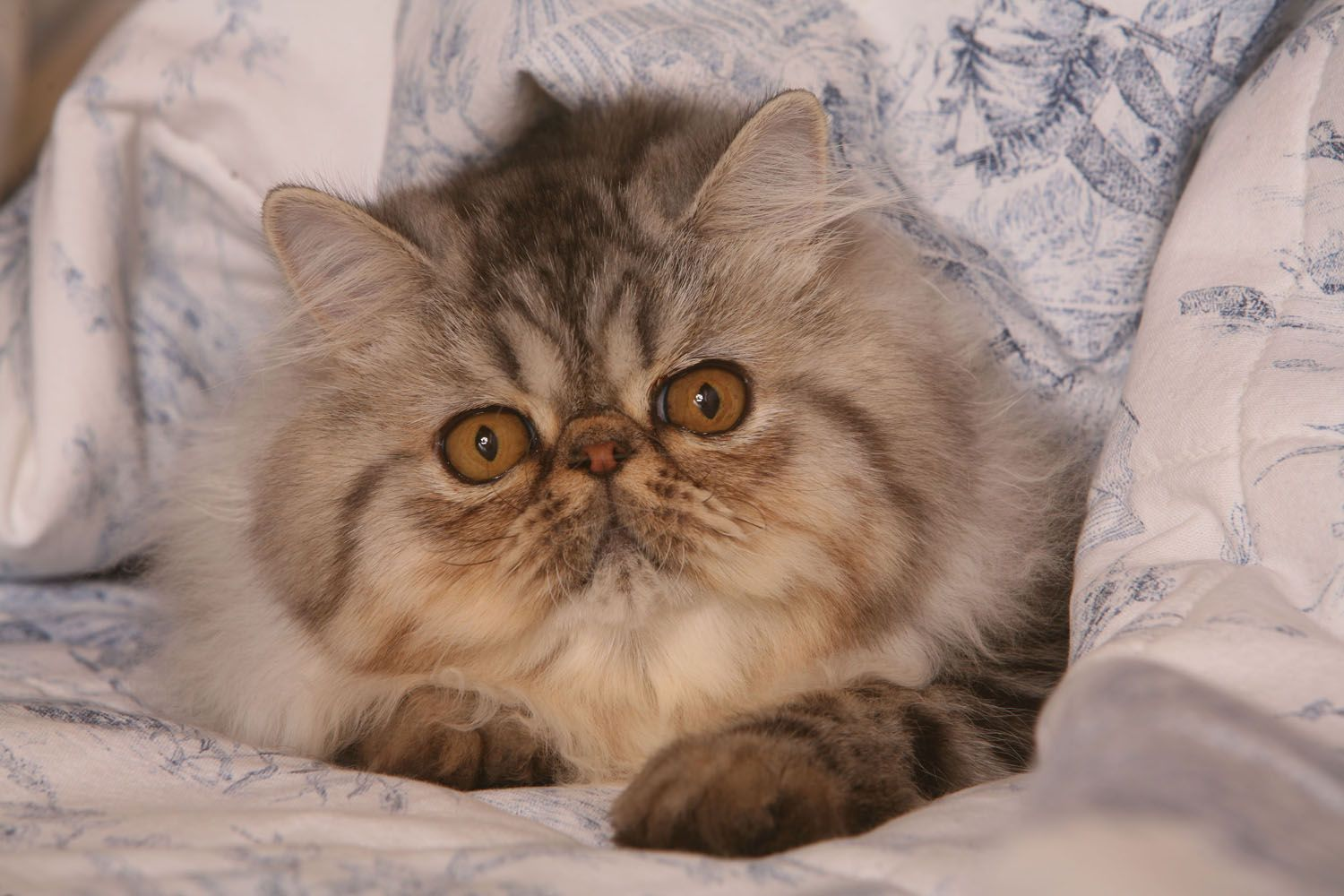
Những điều cần chú ý
Từ đặc điểm cụ thể về giống đến tổng quan chung về sức khỏe, đây là một số sự thật thú vị về mèo Ba Tư
Họ dễ mắc bệnh thận.
Nhìn chung, mèo Ba Tư có sức khỏe tốt nhưng cũng giống như tất cả các loài mèo, chúng có một số bệnh đáng lo ngại, đó là bệnh thận (có thể ở dạng đa nang) hoặc nhiều u nang hình thành bên trong cơ quan của cơ thể. Tình trạng này được cho là xảy ra với 1/3 số mèo Ba Tư. Bệnh này có thể điều trị được bằng phương pháp chăm sóc thú y và chế độ ăn uống thích hợp, cùng với việc tập thể dục ở mức độ hợp lý cho mèo của bạn.
Họ không phải là người leo núi.
Thay vì nhảy và leo trèo lên những chỗ cao mới trong phòng khách, mèo Ba Tư thích được cùng bạn ngồi trên chiếc ghế bành và ngắm nhìn thế giới xung quanh. Mặc dù thích chơi đùa như giống mèo trong phần tiếp theo, nhưng mèo Ba Tư yêu thích sự thoải mái thụ động mà đồ đạc trong nhà mang lại hơn là chạy tới chạy lui. Mèo Ba Tư thích đi dạo hơn là chạy nhảy. Tóm lại là chúng hầu như không muốn chứng tỏ bản thân.
Các đường nét dễ thương trên khuôn mặt có thể báo hiệu rằng chúng có vấn đề
Chiếc mũi thanh tú đó nhìn rất đẹp nhưng cũng gây ra các vấn đề về hô hấp cho mèo Ba Tư. Giống mèo này sở hữu chiếc đầu ngắn nên khuôn mặt và mũi có vẻ bị hõm vào trong. Mặc dù sự thay đổi đối với chiếc mũi hếch di truyền là một trong những đặc điểm mà người lai giống và người yêu mèo yêu thích nhất ở giống mèo này, nhưng nó có thể khiến mèo Ba Tư gặp phải khó khăn liên quan đến các vấn đề hô hấp.
Chế độ ăn uống lành mạnh, mèo khỏe mạnh hơn
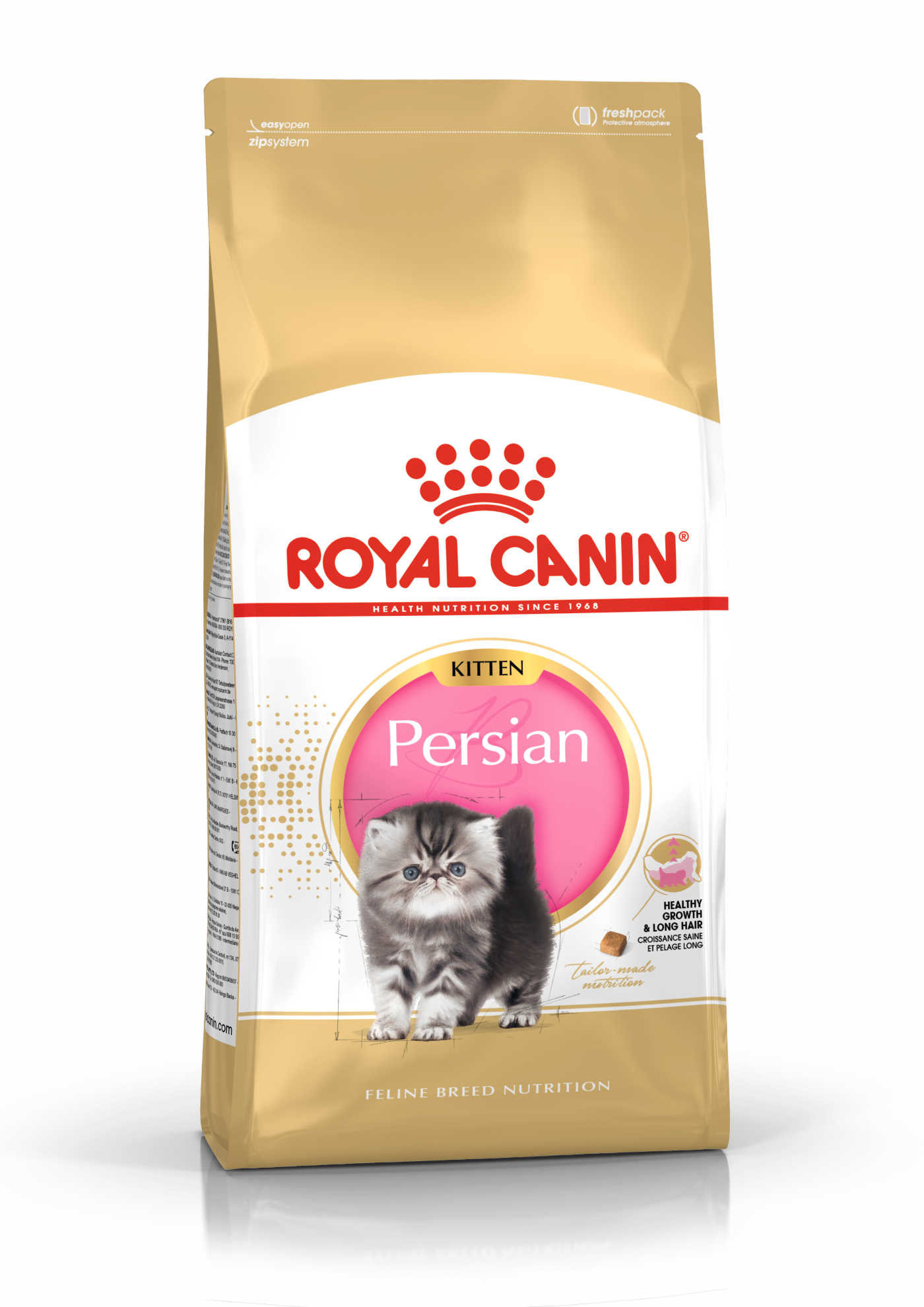
Chế độ dinh dưỡng phù hợp với sức khỏe có vai trò cơ bản trong việc duy trì sức khỏe và vẻ đẹp của mèo Ba Tư. Thức ăn cung cấp năng lượng giúp thực hiện các chức năng quan trọng và công thức dinh dưỡng hoàn chỉnh cho mèo phải có sự cân bằng các chất dinh dưỡng thích hợp. Cho chúng ăn theo cách này sẽ cung cấp một chế độ ăn uống không bị thiếu hoặc thừa. Cả hai chế độ ăn uống này đều có thể gây ảnh hưởng xấu đến sức khỏe của mèo.
Cần phải luôn có sẵn nước ngọt sạch để hỗ trợ tiểu tiện đều đặn, khỏe mạnh. Mèo cũng thích nghi một cách tự nhiên với việc ăn khẩu phần nhỏ – từ 7 đến 10 lần một ngày. Cho mèo ăn khẩu phần thức ăn hạt hàng ngày theo khuyến nghị một lần một ngày sẽ giúp chú mèo Ba Tư của bạn tự điều chỉnh mức tiêu thụ.
Những khuyến nghị sau đây dành cho động vật khỏe mạnh. Nếu mèo của bạn có vấn đề về sức khỏe, vui lòng tham khảo ý kiến của bác sĩ thú y, họ sẽ chỉ định chế độ ăn theo toa dành riêng cho mèo.
Tăng trưởng là một giai đoạn thiết yếu trong cuộc đời của mèo con. Đó là thời điểm của những thay đổi lớn, khám phá và gặp gỡ những điều mới mẻ. Nhu cầu của mèo con Ba Tư về năng lượng, protein, khoáng chất và vitamin lớn hơn nhiều so với nhu cầu của mèo trưởng thành. They need energy and nutrients to maintain their body, but also to grow and build it. Sự phát triển của mèo con có hai giai đoạn:
Xây dựng - Từ sơ sinh đến 4 tháng:
Cai sữa là sự chuyển đổi từ thức ăn lỏng – hoặc sữa mẹ – sang thức ăn đặc. Thời kỳ này thường tương ứng với thời điểm chúng cắt răng sữa, lúc mèo con được 3 đến 6 tuần tuổi. Ở giai đoạn này, mèo con vẫn chưa thể tập lẫy, vì vậy một bữa ăn mềm (thức ăn hạt đã được bù nước hoặc thức ăn ướt đã điều chỉnh) sẽ giúp quá trình chuyển đổi giữa thức ăn lỏng và rắn dễ dàng hơn.
Từ 4 đến 12 tuần sau khi sinh, khả năng miễn dịch tự nhiên của mèo con nhận được từ sữa non của mẹ - hoặc sữa đầu - giảm trong khi hệ thống miễn dịch của mèo con dần dần phát triển. Thời điểm quan trọng này, được gọi là lỗ hổng miễn dịch, cần một phức hợp các chất chống oxy hóa, bao gồm cả vitamin E, để giúp hỗ trợ khả năng miễn dịch tự nhiên của chúng.
Mèo con trải qua một giai đoạn phát triển dữ dội và đặc biệt mỏng manh, trong đó chúng dễ bị rối loạn tiêu hóa. Chế độ ăn uống của chúng lúc này không chỉ cần giàu năng lượng để đáp ứng nhu cầu tăng trưởng thiết yếu mà còn phải chứa nhiều protein dễ tiêu hóa cho hệ tiêu hóa vẫn đang phát triển. Prebiotic, chẳng hạn như fructo-oligosaccharides, hỗ trợ sức khỏe tiêu hóa bằng cách giúp cân bằng hệ thực vật đường ruột, dẫn đến chất lượng phân tốt. Kết quả? Chất lượng phân tốt, đóng thành khuôn.
Thức ăn của mèo con nên chứa axit béo omega 3 – EPA-DHA – giúp hỗ trợ sự phát triển thần kinh não thích hợp.
Hợp nhất và hài hòa – Từ 4 tháng đến 12 tháng:
Từ tháng thứ tư, tốc độ tăng trưởng của mèo con chậm lại, vì vậy nên cho ăn thức ăn ít chất béo hơn. Điều này đặc biệt quan trọng sau khi mèo được triệt sản.
Từ 4 đến 7 tháng, răng sữa của mèo con rụng và được thay thế bằng răng vĩnh viễn. Khi răng trưởng thành mọc, mèo con cần ăn thức ăn hạt đủ lớn để chúng được khuyến khích gặm.
Cho đến khi được 12 tháng tuổi, hệ thống miễn dịch của mèo con Ba Tư vẫn đang dần phát triển. Một phức hợp các chất chống oxy hóa, bao gồm vitamin E, có thể giúp hỗ trợ khả năng miễn dịch tự nhiên của chúng trong thời gian xảy ra những thay đổi lớn, các cuộc khám phá và gặp gỡ mới này.
Hệ tiêu hóa dần hoàn thiện, với các năng lực tiêu hóa đạt đến độ trưởng thành hoàn toàn vào mười hai tháng tuổi. Sau đó, một con mèo có thể tiêu thụ thức ăn của mèo trưởng thành.
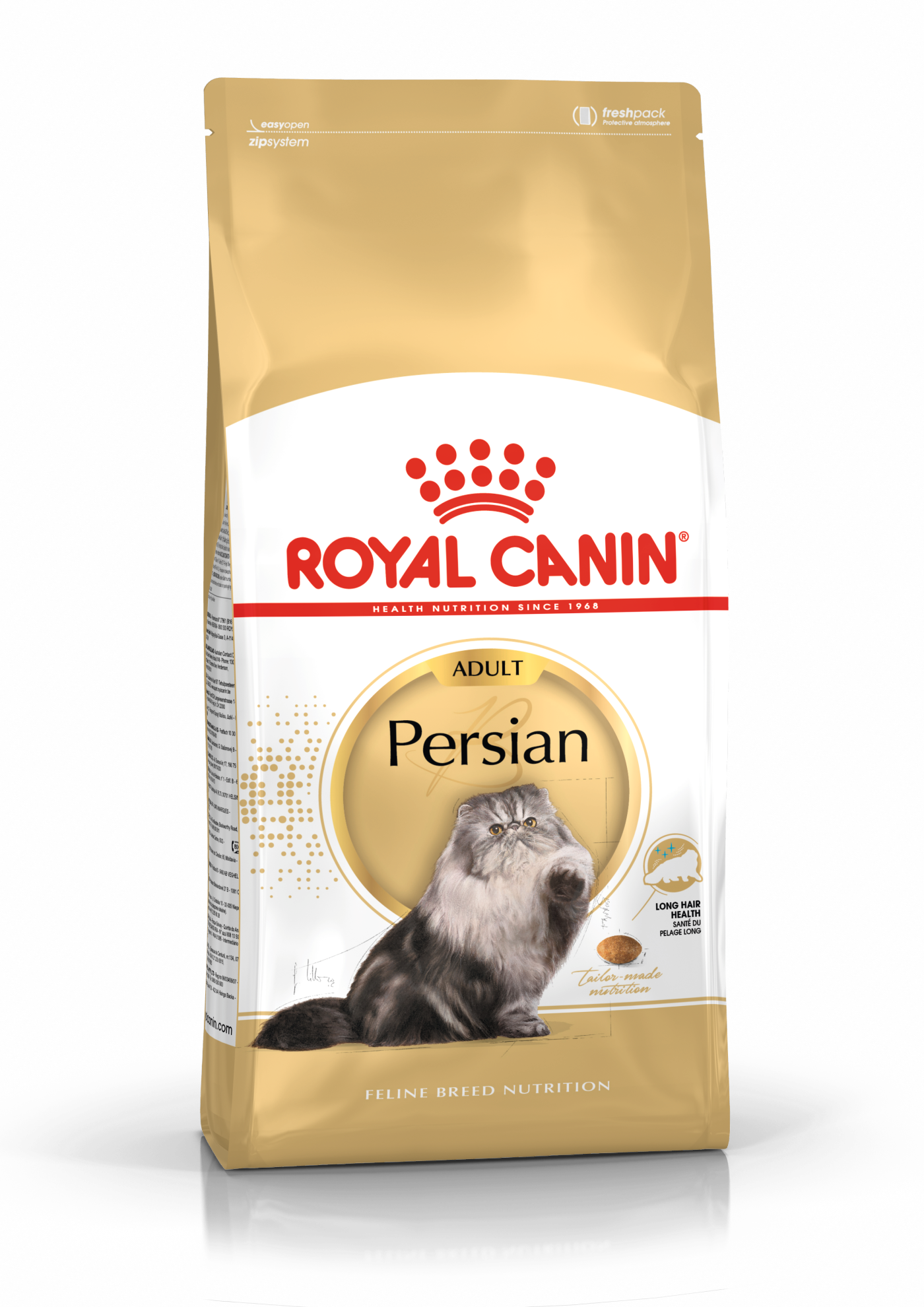
Mục tiêu dinh dưỡng chính cho mèo Ba Tư trưởng thành là:
Giúp giữ gìn sức khỏe làn da và vẻ đẹp của bộ lông dài sang trọng, với việc bổ sung phong phú các chất dinh dưỡng có mục tiêu giúp củng cố vai trò hàng rào bảo vệ của da và tăng cường màu sắc, độ bóng cũng như độ mềm mại cho bộ lông của chúng Kích thích loại bỏ lông ăn vào trong quá trình cắt tỉa lông, nhờ các sợi được chọn lọc, để giúp giảm sự hình thành búi lông. Là mèo trong nhà, mèo Ba Tư hoạt động tương đối ít và có thể dành hơn 30 giờ một tuần để chải chuốt bộ lông mềm mượt của chúng, do đó chúng thường bị mắc búi lông
Giúp duy trì hệ thống đường tiết niệu khỏe mạnh. Cách thức hoạt động đặc biệt của hệ thống tiết niệu ở mèo Ba Tư khiến chúng dễ bị sỏi thận hơn những con mèo khác
Hỗ trợ tiêu hóa tối ưu và cân bằng hệ vi khuẩn đường ruột bằng cách sử dụng protein dễ tiêu hóa và prebiotics
Đảm bảo rằng kích thước, hình dạng và kết cấu thức ăn phù hợp với phương pháp nhặt thức ăn của mèo, tức là bằng mặt dưới lưỡi của chúng. Mèo Ba Tư có hàm ngắn, đặc trưng với đầu tròn, rộng và mặt phẳng.
Thức ăn phải có hình dạng sao cho tiếp xúc tối đa với lưỡi và cải thiện khả năng kết dính, giúp mèo dễ dàng lấy được.

Mèo lớn tuổi – mèo trên 12 tuổi – đôi khi cũng có thể gặp khó khăn trong việc hấp thụ. Để duy trì trọng lượng của mèo già và giảm thiểu nguy cơ thiếu hụt chất dinh dưỡng, bạn nên cung cấp cho chúng thức ăn dễ tiêu hóa với đầy đủ các chất dinh dưỡng cần thiết.
Khi lớn hơn, mèo ngày càng mắc nhiều vấn đề về răng, và ở một số mèo lớn tuổi, vị giác và khứu giác cũng có thể suy giảm, điều này có thể dẫn đến việc tiêu thụ ít thức ăn hơn. Để giúp mèo tiếp tục ăn đủ lượng thức ăn, bạn cần phải đảm bảo hình dạng, kích thước và độ cứng - có nghĩa là kết cấu - của thức ăn hạt phù hợp với bộ hàm giờ đây dễ vỡ hơn của chúng.
Lưu ý rằng mức năng lượng tốt nhất cho bất kỳ chú mèo nào vẫn phụ thuộc vào lối sống của chúng, ngay cả những chú mèo đang già đi. Mèo lớn tuổi vẫn đi ra ngoài thường xuyên sẽ được hưởng lợi từ chế độ ăn uống có hàm lượng chất béo cao hơn đôi chút. Mặt khác, quá trình lão hóa không làm giảm nguy cơ béo phì của mèo nuôi trong nhà. Lượng calo nạp vào của chúng vẫn cần được theo dõi chặt chẽ. Thực phẩm có hàm lượng chất béo vừa phải có thể là lựa chọn tối ưu.

Chăm sóc mèo Ba Tư
Mẹo chăm sóc lông, huấn luyện và tập thể dục
Mèo Ba Tư cần một số lượng hoạt động thú vị mỗi ngày như bất kỳ họ nhà mèo nào và việc chơi với chú mèo của bạn sẽ giúp thúc đẩy điều này. Trên thị trường có bán rất nhiều đồ chơi dành cho mèo. Những quả bóng vui nhộn và những thứ rơi vãi sẽ giữ cho người bạn cuồng nhiệt của bạn di chuyển và duy trì máu lưu thông để có sức khỏe tối ưu. Sự thật là mèo Ba Tư rất thích tận hưởng khoảng thời gian thư thái, nhưng việc tập thể dục hàng ngày đóng vai trò quan trọng để giữ cho chúng luôn khỏe mạnh và thon thả.
Nên cắt tỉa lông cho mèo Ba Tư như thế nào? Thật siêng năng. Giống mèo này được ca ngợi vì bộ lông dài đặc trưng của chúng nhưng đừng nhầm lẫn, bạn phải nỗ lực để giữ cho chúng trông thật đẹp và giữ cho chú mèo của bạn luôn khỏe mạnh. Để bắt đầu: chải lông hàng ngày bằng lược dành riêng cho mèo Ba Tư của bạn. Làm như vậy sẽ kiểm soát được tình trạng xơ rối. Bạn cũng nên tắm cho mèo hàng tháng để cả lớp lông ngoài cùng mềm mượt và lớp lông tơ đều tránh khỏi bụi bẩn và những vi trùng có hại, đảm bảo lau khô và chải kỹ sau đó. Chải ngược bộ lông của Mèo Ba Tư sẽ giúp phân bổ đều lượng dầu tự nhiên của nó. Tất nhiên, cắt tỉa móng mèo Ba Tư thường xuyên cũng sẽ giúp chúng khỏe mạnh.
Việc huấn luyện mèo Ba Tư sẽ rất dễ dàng với bạn, nhờ bản tính vô cùng dễ mến của chúng. Đây là một giống mèo thích làm hài lòng, vì vậy việc hiểu và làm theo các mệnh lệnh rất dễ dàng đối với chúng. Hộp vệ sinh, cung cấp thức ăn, đặt trên ghế sofa một mình - chúng sẽ hiểu tất cả nếu rèn luyện được tính kiên nhẫn và kỷ luật nhẹ nhàng. Giống mèo này rất nhạy bén nên việc làm theo những gì bạn nói sẽ không phải là vấn đề lớn.
Mèo Ba Tư cần một số lượng hoạt động thú vị mỗi ngày như bất kỳ họ nhà mèo nào và việc chơi với chú mèo của bạn sẽ giúp thúc đẩy điều này. Trên thị trường có bán rất nhiều đồ chơi dành cho mèo. Những quả bóng vui nhộn và những thứ rơi vãi sẽ giữ cho người bạn cuồng nhiệt của bạn di chuyển và duy trì máu lưu thông để có sức khỏe tối ưu. Sự thật là mèo Ba Tư rất thích tận hưởng khoảng thời gian thư thái, nhưng việc tập thể dục hàng ngày đóng vai trò quan trọng để giữ cho chúng luôn khỏe mạnh và thon thả.
Nên cắt tỉa lông cho mèo Ba Tư như thế nào? Thật siêng năng. Giống mèo này được ca ngợi vì bộ lông dài đặc trưng của chúng nhưng đừng nhầm lẫn, bạn phải nỗ lực để giữ cho chúng trông thật đẹp và giữ cho chú mèo của bạn luôn khỏe mạnh. Để bắt đầu: chải lông hàng ngày bằng lược dành riêng cho mèo Ba Tư của bạn. Làm như vậy sẽ kiểm soát được tình trạng xơ rối. Bạn cũng nên tắm cho mèo hàng tháng để cả lớp lông ngoài cùng mềm mượt và lớp lông tơ đều tránh khỏi bụi bẩn và những vi trùng có hại, đảm bảo lau khô và chải kỹ sau đó. Chải ngược bộ lông của Mèo Ba Tư sẽ giúp phân bổ đều lượng dầu tự nhiên của nó. Tất nhiên, cắt tỉa móng mèo Ba Tư thường xuyên cũng sẽ giúp chúng khỏe mạnh.
Việc huấn luyện mèo Ba Tư sẽ rất dễ dàng với bạn, nhờ bản tính vô cùng dễ mến của chúng. Đây là một giống mèo thích làm hài lòng, vì vậy việc hiểu và làm theo các mệnh lệnh rất dễ dàng đối với chúng. Hộp vệ sinh, cung cấp thức ăn, đặt trên ghế sofa một mình - chúng sẽ hiểu tất cả nếu rèn luyện được tính kiên nhẫn và kỷ luật nhẹ nhàng. Giống mèo này rất nhạy bén nên việc làm theo những gì bạn nói sẽ không phải là vấn đề lớn.
7/7
Tất tần tật về mèo Ba Tư
Đọc thêm về chủ đề này
Nguồn
- Trung tâm thú y Hoa Kỳ https://vcahospitals.com/
- Bách khoa toàn thư của Royal Canin về loài mèo. Ấn bản năm 2010 và 2020
- Banfield Pet Hospital https://www.banfield.com/
- Sách về sản phẩm BHN của Royal Canin
Thích và chia sẻ trang này